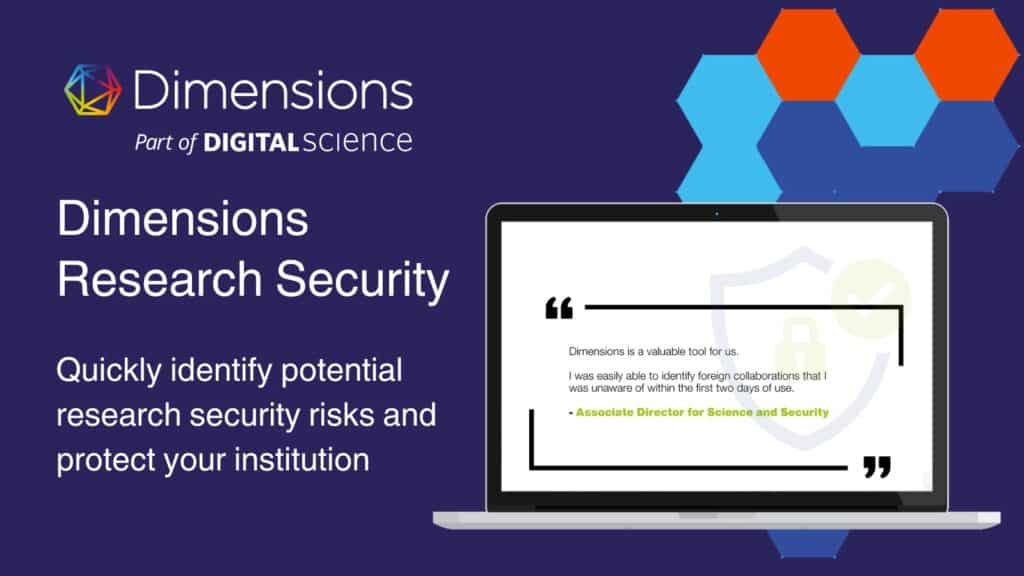
Dimensions Research Security is the new tool to assess and mitigate risk, and assist with compliance
Digital Science’s flagship product Dimensions has announced a new solution for research institutions and industry, helping to identify risks associated with government research security requirements. Why is the Dimensions Research Security app the right choice for your research operations?
Universities and industry involved in research and development are no strangers to the need to protect intellectual property and mitigate against risk. Nevertheless, organizations around the world – from the FBI in the United States to Universities UK – are increasingly calling for these risks to be taken more seriously.
Inevitably, additional government regulations and recommendations have followed, requiring research institutions – and individual researchers who receive government funding – to demonstrate compliance within their local jurisdictions. Failing to do so can result in penalties and loss of reputation, as well as the impact on research, and economies that rely on that research.
The complexity of these issues combined with the vast networks of research globally means that institutions often can’t “go it alone” – they need something to shine a stronger, brighter spotlight on research security compliance, and to provide the right information to assist in making the best decisions.
Dimensions – among the world’s largest linked research databases – is perfectly placed to be a beacon of light on these issues.
The new Dimensions Research Security app
The Dimensions Research Security app includes a visual dashboard that enables research organizations to obtain information quickly and easily.
Reviewing research collaborations for compliance? Dimensions Research Security enables you to thoroughly and efficiently conduct due diligence on potential research collaborations, helping you to save on time and resources.
With Dimensions Research Security, you can:
- Efficiently verify disclosures
- See all research collaborations – via grant funding information or co-authorship on publications, in patents or in clinical trials
- Surface multiple affiliations for individual researchers
- Screen for restricted entities or individuals
- Pinpoint countries of interest
- Uncover direct and indirect funding sources
- Reveal undisclosed collaborations or international funding sources that could put grant applications at risk.
Research organizations are then able to assess and prioritize potential risks, with the power of world-leading information at their fingertips.
Find out more about the new Dimensions Research Security app at the Dimensions blog site, or ask for a demonstration today.

About Dimensions
Part of Digital Science, Dimensions is among the world’s largest linked research database and data infrastructure provider, re-imagining research discovery with access to grants, publications, clinical trials, patents and policy documents all in one place. www.dimensions.ai. Follow @DSDimensions on X (Twitter) and LinkedIn.
About the Author

David Ellis, Press, PR and Social Manager | Digital Science
David has 30 years’ experience in media and communications. With a background in broadcast journalism, his career focus has been in research communication – including science, health science and medicine – spanning 25 years of service in the university sector. His experience also includes both internal and external communications in the health and manufacturing sectors.
The post Dimensions shines a spotlight on research security appeared first on Digital Science.
from Digital Science https://ift.tt/NT05wUQ
No comments:
Post a Comment